The Art House Project is one of the oldest art projects on Naoshima (only preceded by the Benesse House Museum).
It is located in the village of Honmura on the eastern coast of the island. The concept and main idea of the Art House Project are to install site-specific artworks not in a museum but inside old traditional houses that were renovated for the occasion.
The idea was pretty unique at the time of its inception, and it served as the basis for the format of a large number of art sites on the neighboring islands for the Setouchi Triennale and the larger Art Setouchi endeavor. I assume the format has also been reprised in other parts of the world.
Soichiro Fukutake, Benesse Art Site Naoshima‘s president, saw it as a way to bring contemporary art to the lives of the islanders.
The result doesn’t completely live up to Fukutake’s dreams as the art remains somewhat separate from the residents’ lives, each house having become a mini-museum (Fukutake’s original idea is actually closer to reality on some of the smaller and lesser-known islands). However, it’s been instrumental in turning Honmura into the lively, active, and idyllic-looking village that it is today.
It is still definitely worth a visit. And it is this influx of visitors to a small village they would never have cared for otherwise, that helped to transform and revive it.







The Art House Project is comprised of seven houses and buildings that are spread all around Honmura.
They each have a unique name and they host one or several artworks from one specific artist each.
Kadoya
Sea of Time 98 (1998, 2018), Naoshima’s Counter Window (1998), and Changing Landscape (1999)
Tatsuo Miyajima
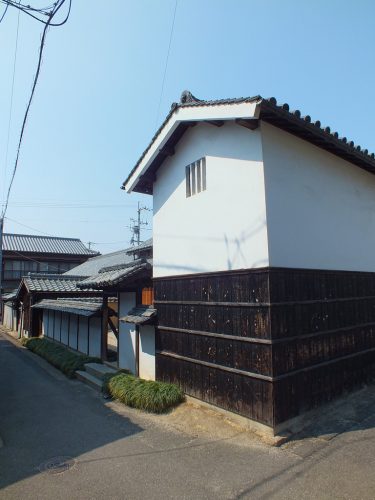
The very first Art House, Kadoya is a roughly 200-year-old building. Its name means “corner house” and it’s a yago, a nickname used when different households had the same last name, which is a common thing on small islands. It is composed of two buildings (the main house and a storage house) which were in shambles before being renovated for the project. Damaged parts were fixed with traditional techniques and materials, and the inside of the house was remodeled in order to be able to fit the artworks.
Tatsuo Miyajima has set up two installations and a painting in the house.
Located inside the house, Sea of Time 98 is a pool of water in which 125 LED digital counters blink at various paces. While their location in the pool is random, the pace of each counter is unique. They were selected by the island’s residents when the installation was first created. It was the first time that islanders were involved in the design process of an Art Setouchi artwork. In 2018, as part of the celebrations for the Art House Project’s 20th anniversary, residents got to reset et repace the counters.
Naoshima’s Counter Window is – as its name indicates – a window with three large digital numbers occupying most of the surface. Each one is a counter made of liquid crystals. The glass of the window is opaque, but the changing numbers created by the liquid crystals are transparent and let the light enter the room through them in a way that is reminiscent of traditional sliding doors.
Changing Landscape, located in the storage house, is a 19th Century scroll depicting a landscape. However, paint has been applied to it by Miyajima in a way that the landscape can now only be seen through the shapes of digital numbers.




Go’o Shrine
Appropriate Proportion (2002)
Hiroshi Sugimoto
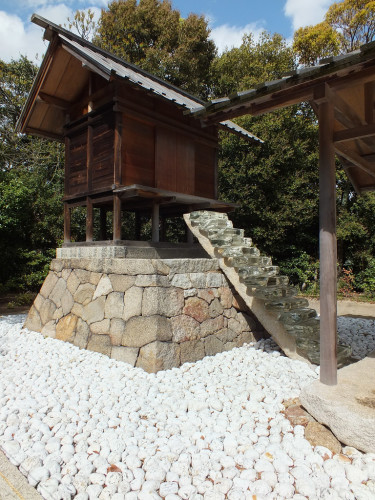
Go’o Shrine has been a shrine well before becoming an artwork. Dependant of the Hachiman Shrine located just a hundred meters south on the same hill, it fell into disarray in the second half of the 20th Century. When Benesse was scouting for locations for the Art House Project, some islanders suggested the ruined shrine. The idea was approved and Hiroshi Sugimoto was commissioned to redesign and rebuild it.
However, instead of rebuilding it in the fashion of current shrines, he decided to inspire himself from the shinmei-zukuri style of architecture, that is how ancient shrines at the origins of the Shinto religion were built. In these times, as Shintoism was taking shape, the kami (deities) were believed to live in notable natural elements (an ancient tree, a big stone, etc.) Building upon this idea, Sugimoto decided to center the shrine around a 24-ton flat granite stone that would serve as an iwakura (kami dwelling). In addition, the main feature of the shrine is a set of stairs made of glass and that goes from the main building to underneath the stone.
This underground section is accessible from a tunnel on the side of the hill and reminds the visitor of a kofun (ancient mausoleums that were contemporary of the time when shinmei-zukuri was the main style for shrines in Japan).
Daylight enters the underground area from the glass stairs, and on rainy days, a reflecting pool is created by the infiltrating water, giving the impression that the stairs go even further down the entrails of the earth.
The shrine is indistinguishable from the artwork and the name Appropriate Proportion comes from the idea that deities inhabit spaces and locations of certain proportions.






Minamidera
Backside of the Moon (1999)
James Turrell & Tadao Ando
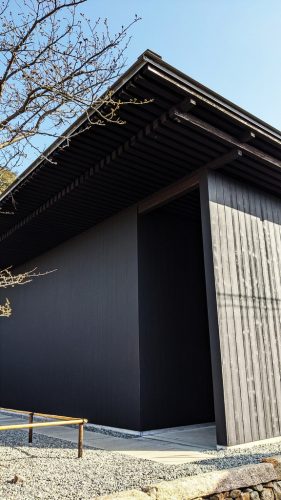
Many years ago, there used to stand a Buddhist temple called Jizoji Kannon-in but nicknamed Minamidera (South Temple) by the locals. Even after its destruction, the place kept the nickname (there is still a temple just north of it; it’s not called “Kitadera” but Gokuraku-ji). So when the location was chosen for one of the Art Houses in 1999, it kept that name.
Nowadays, the big black rectangular structure designed by Tadao Ando looks nothing like a temple, but the architect chose charred wood as its main material as opposed to his signature concrete in order to remain true to the visual identity of Honmura.
Meditative contemplation also remains the main activity of the place thanks to the sole artwork housed in the building. A part of his Aperture series, James Turrell’s Backside of the Moon promises to surprise you and offer you a very unique and unexpected experience.
I don’t want to give away too much, the surprise is a big part of the experience in my opinion, but know that this installation, using light as its main medium, uses no electricity, and the only mechanism you’ll witness is the one in your eyes, there is none in the room that you’re about to enter.
Keep this in mind when you are led by the staff to the bench where you’ll sit in complete darkness. One that you’ve rarely experienced before. You’re advised to arm yourselves with patience when entering Minamidera as experiencing Backside of the Moon will last around 10 minutes.
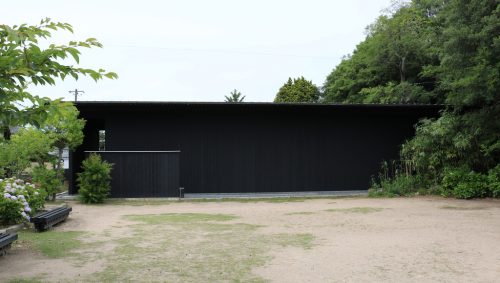
Gokaisho
Yoshihiro Suda (2006)
The owner of the house that used to stand there loved playing the game of Go. He would welcome his friends quite regularly to partake in their favorite hobby. This is what gave the place its current name, Gokaisho meaning “Go parlor.”
Two small tatami rooms can be found on either side of the entrance and a large (mostly) rock garden occupies the remainder of the space.
In one room, 24 colorful camellias are scattered, in an arrangement inspired by Gyoshu Hayami’s Falling Camellias. A bamboo barrier prevents visitors from entering the space. In the other room, nothing. Just another bamboo barrier.
And that’s all.
Unless you look more closely…
Then you realize that the flowers are not real flowers. Yoshihiro Suda has carved them out of wood. Not any wood, but goshiki-tsubaki, the Japanese camellia tree that gives flowers of five different colors. If you look even closer, the other room also contains art. The bamboo barrier is not a bamboo barrier at all but also a sculpture carved from goshiki-tsubaki wood.
Oh, and in the garden, there is a small tree. It is a real goshiki-tsubaki too. As the tree is in bloom from December to February, it’s of course the best time to visit this artwork.
Ishibashi
The Falls (2006), The Garden of Ku (2009)
Hiroshi Senju
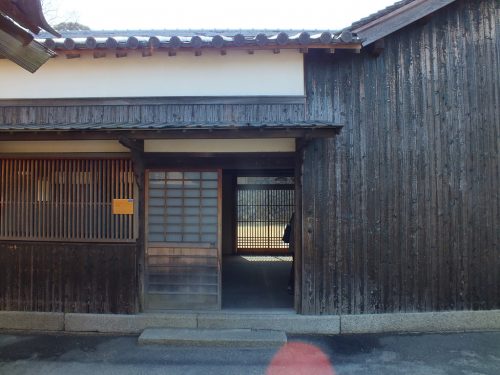
This time, the house is named after the family that lived there until 2001! The Ishibashi family were originally salt producers. Salt was one of the main and most lucrative activities on the shores of Kagawa Prefecture until the postwar government shut down traditional production in the Seto Inland Sea to industrialize and relocate it somewhere else in Japan.
As such, during the Meiji period (mid-19th to early 20th Centuries), the Ishibashi family was one of the richest families on the island and their house was one of the biggest if not the biggest.
When it was turned into an “Art House”, special attention was given to the renovation of the building which was altered as little as possible in order to root the artworks in the history of the house and of the island. And indeed, of all the Art Houses, Ishibashi is the one that looks the most like a traditional Naoshima house, simply because it is one.
In the main room of the house, various paintings of various sizes were created by Hiroshi Senju. They represent more or less abstract landscapes and together, with the remodeled garden, they constitute the Garden of Ku (Ku meaning “emptiness”).
As you walk along the corridors, you’ll soon arrive in the former warehouse where the second artwork, The Falls occupies an entire wall. It simply represents waterfalls or is it streams of salt falling into the water? You decide, but in any case, it’s stunningly beautiful.
And if you wonder why there is a tiny stone bridge in the inner courtyard, know that ishibashi means “stone bridge” in Japanese, so I guess it’s a joke from either the artist or the architect.






Haisha
Dreaming Tongue, Bokkon-Nozoki (2006)
Shinro Ohtake
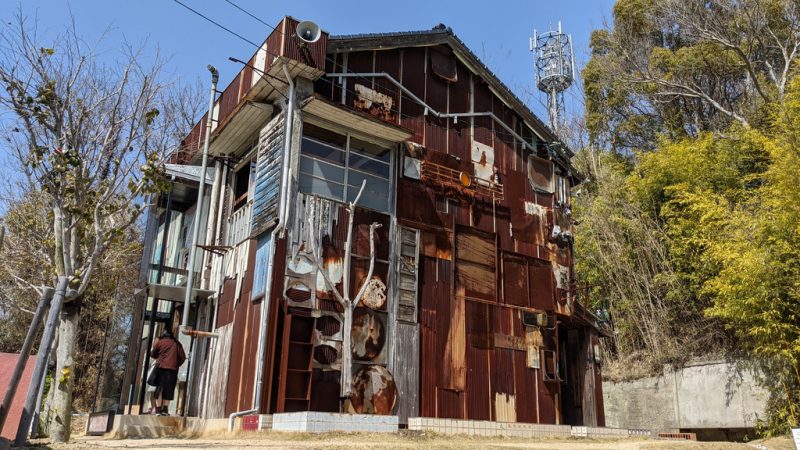
Haisha means “dentist” in English and this next Art House used to be a dentist’s office. You can find dental motifs here and there around the house when you look closely in the middle of everything else.
If you know Shinro Ohtake, you’ll understand what I mean when I say that the building has been redesigned in pure Ohtake style and that it would be pointless to try and describe it.
If you’re not familiar with him, I would call a lot of his art “punk art” and I don’t think he would disagree.
The materials used to build the installation come from various sources: abandoned houses on Naoshima, shipyards in Uwajima where the artist lives, and more, including a Statue of Liberty that was donated by a pachinko parlor from Niigata.











Kinza
Being Given (2001)
Rei Naito
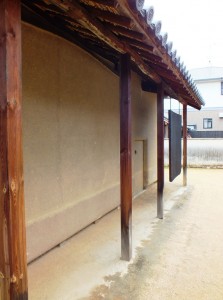
Like Kadoya, Kinza is also the nickname of the house that used to stand there. Originally, it was probably used to house “day fishermen” but was then occupied by a family until it was abandoned in 1996.
It took three years to renovate the small house, as Rei Naito wanted to keep the structure of the house – especially its carpentry – as intact as possible, and she did a lot of the redesign and renovating by herself and by hand.
Visiting Being Given is a rather unique experience as only one person can enter the building at a time and they have it for themselves for 15 minutes.
You can read more about the experience if you follow the link.
Note that at the time of writing of this page (March 2021), Kinza is closed to the public as it is being renovated again. No word as to when it will be reopened.
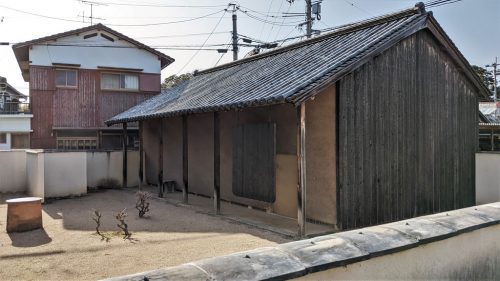
Practical Information
Usually, the Art House Project is open every day but Mondays from 10.00 a.m. to 4.30 p.m.
Open on Mondays when it’s a holiday. In that case, the Art House Project is closed on the following regular day (usually Tuesday).
Admission:
– Multi-site ticket: 1,050 yen. Valid all-day for six Art Houses (excluding Kinza).
– Single-site ticket: 420 yen. Valid for one Art House (excluding Kinza).
– Free for children aged 15 and under.
– Access to Kinza requires advance reservation (note that Kinza is currently closed).
– Tickets are bought at the Honmura Lounge & Archive.
Please follow the instructions that are given to you by the staff and are written on your ticket.
Sources
– Art House Project Handbook. Benesse Holdings Inc. 2019.
– Setouchi International Art Festival 2010 Artworks Catalog. Oshita, Kentaro. Fuji Bijutsu Priting Co. 2011.
– The author’s various personal visits, experiences, and encounters since 2010.
The texts and pictures in the page are the property of David Billa / Setouchi Explorer and can’t be reproduced without explicit permission.





